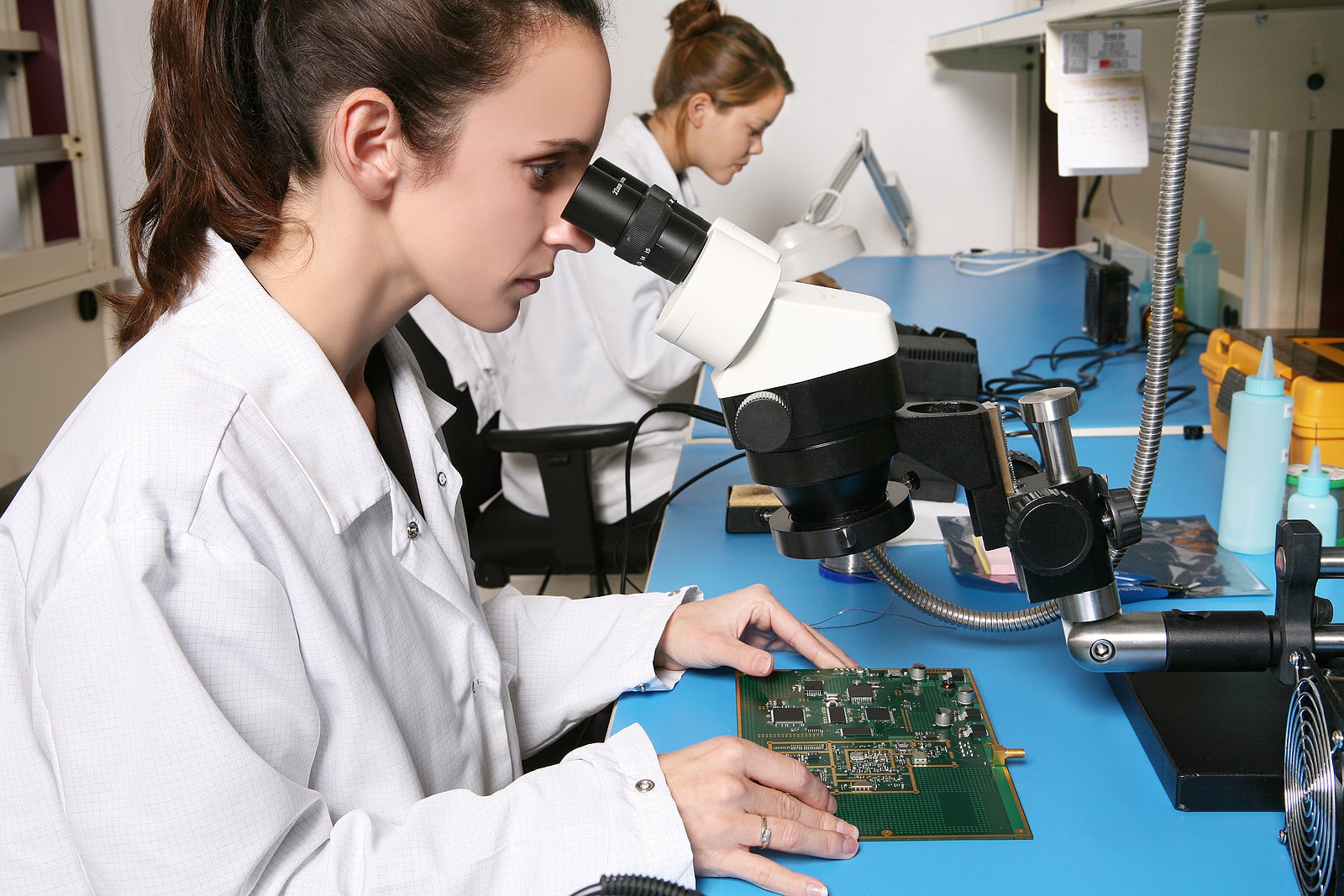
Printed circuit boards, or PCBs, are essential almost anywhere that electronic components are used. These boards are made from non-conductive materials and connect electronic components using conductive lines, pads and similar features.
In practice, they serve as the “brains” of a device, ensuring that individual components like sensors and computers can talk to one another and function properly.
Electrical components are assembled on the board to form a complete circuit. Both the board itself and the board with components attached may be called a PCB.
When Are PCBs Necessary?
Printed circuit boards are essential for most consumer electronics, smart technology, electronic toys, computers and many automotive parts. Almost anywhere components like LEDs and audio jacks need to communicate with a central computer, a PCB will be the right tool to use.
The more complex the product, the more PCB layers will typically be necessary. Simple devices, like toys, may have PCBs with just one or two layers. Smart electronics, like a smartwatch, may have complex, multilayer PCBs with eight or more layers.
Tech businesses and startups often need to use PCBs when developing new products. Knowing the best practices for designing and using PCBs will prepare you for talking with PCB manufacturers and in the design phase of new products.
The PCB Design Process
Even if you plan to outsource design work, knowing the rough process for creating a PCB circuit can be useful. The right knowledge can help you communicate with the electrical engineers who handle your PCB design.
The design process typically begins with designing a schematic for the circuit. Designers usually use one of many available PCB design tools, which contain features that help to optimize the PCB for different uses and manufacturing conditions.
Using component specifications for the components attached to the finished PCB, the designer will begin connecting lines in the circuit to component pins.
Once the schematic is finished, the designer will use it to generate a Gerber file. This is a vector file that describes the structure of the PCB.
The manufacturer that the designer chooses will use this file to print the physical circuit board. Then, the manufacturer will add and secure electrical components to this board to create a printed circuit board assembly (or PCBA).
The manufacturer will either source the components independently or use parts that the designer has sourced themselves.
Once the manufacturer has the components on hand, they will assemble the boards using either thru-hole or surface mount technology (SMT). SMT is more common in mass-manufactured PCBs, but some large components will need to use the thru-hole method, even in mass-manufactured boards.
The manufacturer will solder the components to the board and then test the finished boards using QA methods like in-circuit tests and automatic optical inspection (AOI).
Many consider the optical inspection processes the “gold standard” for PCB quality control, and there are many visual inspection methods to choose from. Variables like the PCB inspection lighting that a manufacturer uses or the AOI system employed can significantly impact the effectiveness of the quality control process.
If functioning correctly, the boards will be ready for delivery to the customer.
Designing vs. Outsourcing Printed Circuit Boards
If your business is developing a product that needs one or more PCBs, you’ll have to decide whether you will design the circuit in-house or work with a PBC manufacturer or designer.
Designing circuits can be both time-consuming and expensive, especially for those without a strong electrical engineering background.
While business owners with the right background and a highly skilled team may find it possible to design PCBs in-house, most businesses opt to work with a third-party designer. Owners without existing knowledge, in particular, may want to consider outsourcing the design process.
The more complex the board, the more likely it will be that outsourcing is worth it, even for business owners with teams experienced in electrical engineering and PCB design.
Whether you design the circuit board yourself or work with a third-party PCB designer, some considerations will always be important.
For example, what functions does the finished product need to perform, and what components will you need to use to perform those functions? Do you need to meet any industry standards or government regulations on how the PCB is designed? How much money can you spend per PCB, based on the amount you think you can charge for a finished product?
Outsourcing is typically more expensive than designing a circuit board in-house, and you will have less control over both the process and the finished product. However, outsourcing also comes with some serious benefits.
You’ll have access to experts in PCB design who can answer questions and guide you through the design process. Prototype boards will also be less likely to contain design flaws, meaning you may be able to spend less time troubleshooting issues with early designs.
Opportunities in Effective PCB Design
How a company designs its PCBs can significantly impact the performance and quality of electronic products. PCBs made with cheaper components and raw materials — or by manufacturers with fewer quality control processes — may be less reliable, break more often and not last as long as a product with a higher-quality PCB.
However, using high-quality components and working with a manufacturer that prioritizes quality assurance can result in products that work better and last longer.
What Tech Business Owners Need to Know About PCBs
The quality of a printed circuit board can have a significant impact on the quality of electronics. Good design practices and effective QA will help any tech business ensure their PCBs are high quality.
While PCBs can be designed and manufactured in-house, most businesses outsource some or all of the fabrication process. Manufacturing especially tends to be handed off to third parties with the hardware to print PCBs.
2110 Views












